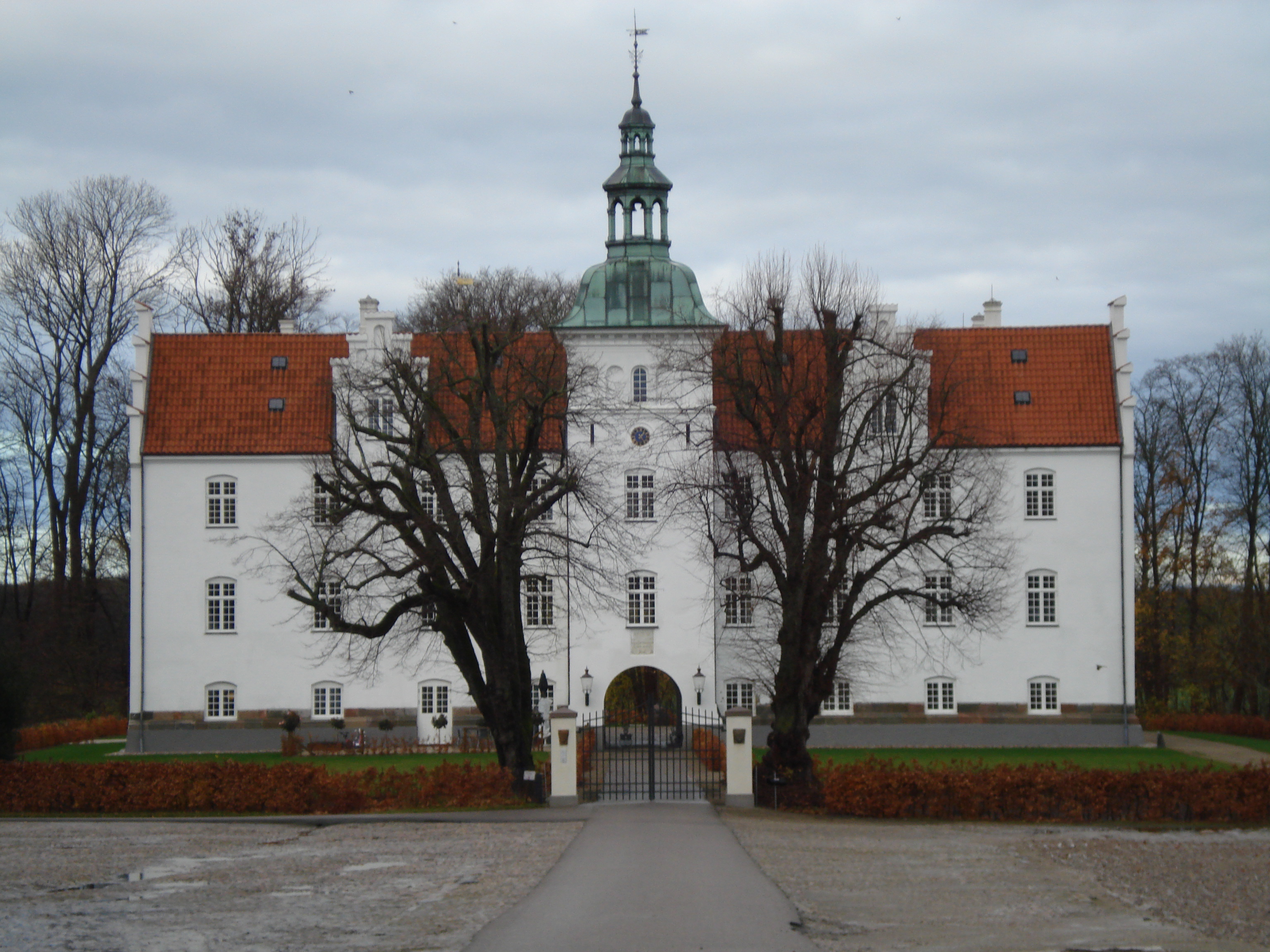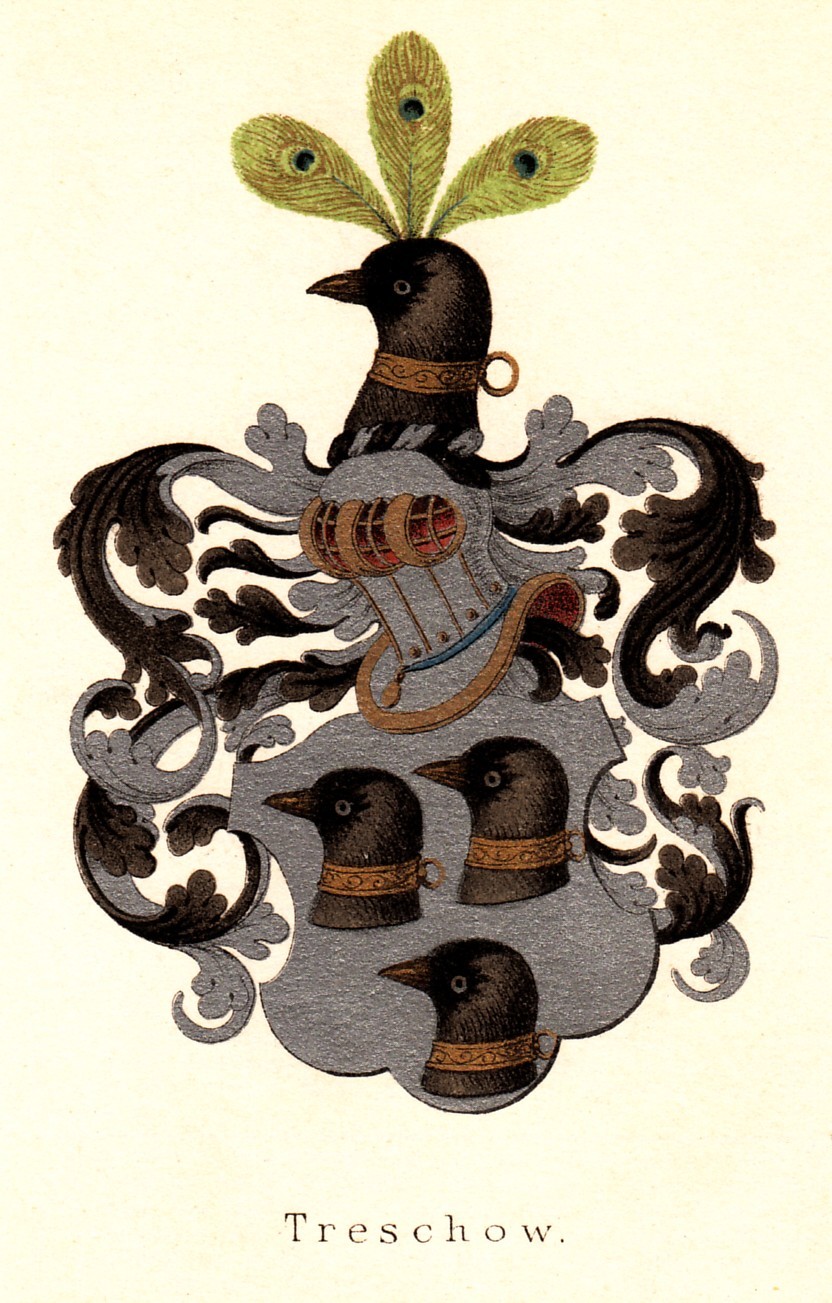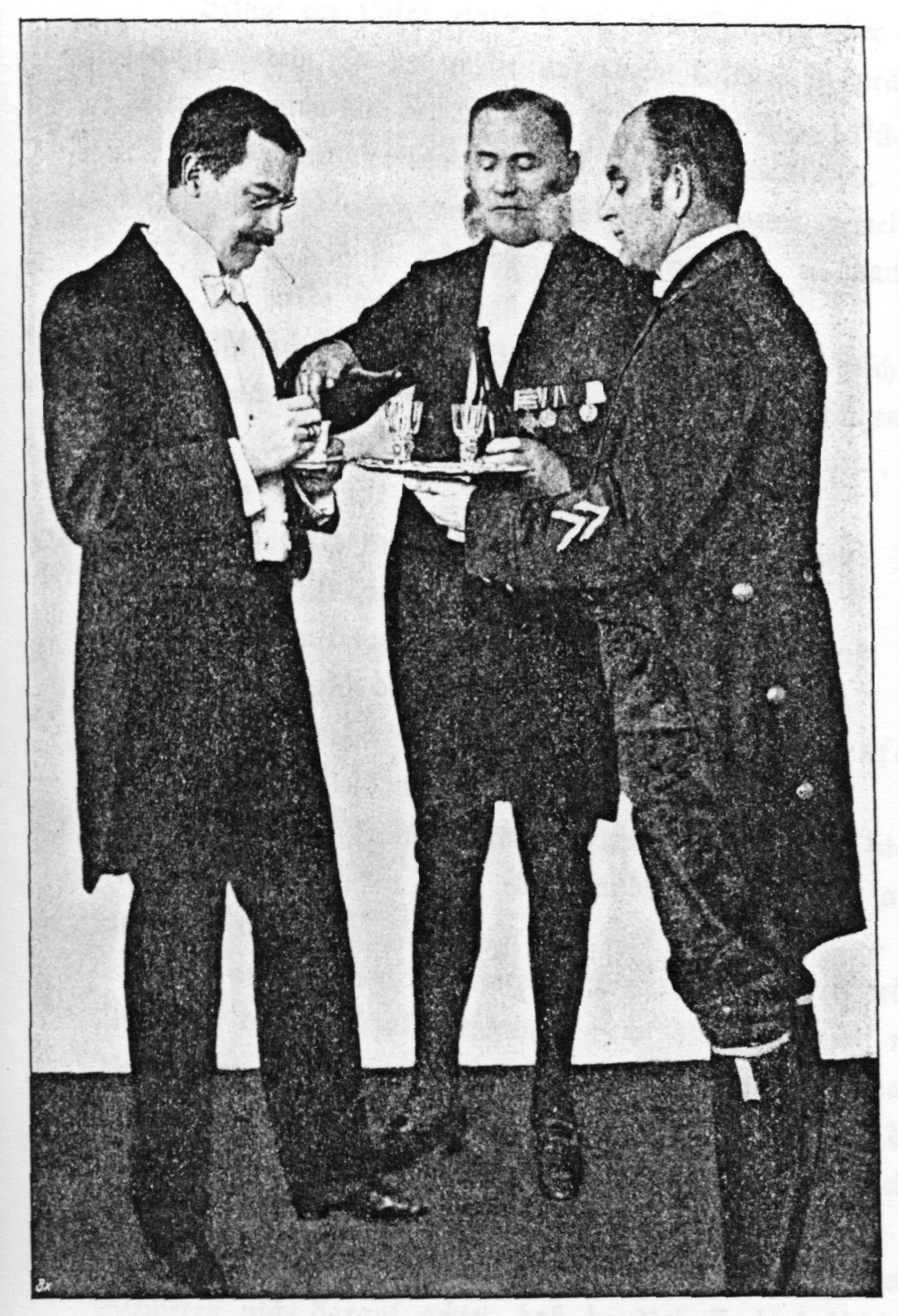|
Lars Lassen
Lars Lassen (1761 – 6 June 1823) was a Danish landowner, proprietor, chamber councilor "kammerråd" and agricultural commissioner. He was the son of Niels Lassen (1729-1811) and Karen Sørensdatter (1726-1810). Lars owned the estates Benzonseje ( Risbyholm), Rosengård, Adamshøj, Egholm, Krabbesholm and Meilgaard. He was married to Johanne Kirstine Meyer (1763-1846) who was the daughter of Procurator Peter Simonsen Meyer, they got together approx. 8 children. Biography Lars Lassen was born at Sprettingegård in Sædder, and baptized on 16 February 1761 in Sædden Church. He is the son of Niels Lassen and Karen (born Sørensdatter) of Sprettingegård. Lars Lassen, like his father, had a great interest in agriculture and management on farms, and in 1787 he worked for his sister Kirstine and brother-in-law Jacob Rosted as a "Servant Clerk" In 1789 he married Johanne Kirstine Meyer, daughter of procurator Peter Simonsen Meyer and Ingeborg Margretha Dørup. Benzonseje M ... [...More Info...] [...Related Items...] OR: [Wikipedia] [Google] [Baidu] |
Niels Lassen (farmer)
Niels Lassen ( 1729 8 January 1811) was a farmer, owner of Sprettingegård farmhouse, master tenant on Turebyholm and Zealand, Zealand's first relocating farmer (Udflytterbonde) under the Danish "stavnsbånd" a serfdom-like institution. He was the father of "Kammerråd" (chamber council) and landowner Lars Lassen. Biography First relocating farmer The Danish "stavnsbånd" bonded men between the ages of 14 and 36 to live on the estate where they were born, and the peasants lived under slave-like conditions during their county. around the 18th century, this form was strongly challenged, and several high-ranking Danes worked to convey or remove the Danish staff band, one of them was "Lensgreve" Count Adam Gottlob Moltke, A.G. Moltke. Around the end of the 1750s, it is clear that when the new form of farm operation - from three-way use to couple use - with sharply increasing yields - had been implemented at Bregentved, Adam Gottlob Moltke immediately began the reorganization o ... [...More Info...] [...Related Items...] OR: [Wikipedia] [Google] [Baidu] |
Seal (emblem)
A seal is a device for making an impression in Sealing wax, wax, clay, paper, or some other medium, including an embossment on paper, and is also the impression thus made. The original purpose was to authenticate a document, or to prevent interference with a package or envelope by applying a seal which had to be broken to open the container (hence the modern English verb "to seal", which implies secure closing without an actual wax seal). The seal-making device is also referred to as the seal ''matrix'' or ''die''; the imprint it creates as the seal impression (or, more rarely, the ''sealing''). If the impression is made purely as a relief resulting from the greater pressure on the paper where the high parts of the matrix touch, the seal is known as a ''dry seal''; in other cases ink or another liquid or liquefied medium is used, in another color than the paper. In most traditional forms of dry seal the design on the seal matrix is in Intaglio (sculpture), intaglio (cut below th ... [...More Info...] [...Related Items...] OR: [Wikipedia] [Google] [Baidu] |
People From Køge Municipality
A person ( : people) is a being that has certain capacities or attributes such as reason, morality, consciousness or self-consciousness, and being a part of a culturally established form of social relations such as kinship, ownership of property, or legal responsibility. The defining features of personhood and, consequently, what makes a person count as a person, differ widely among cultures and contexts. In addition to the question of personhood, of what makes a being count as a person to begin with, there are further questions about personal identity and self: both about what makes any particular person that particular person instead of another, and about what makes a person at one time the same person as they were or will be at another time despite any intervening changes. The plural form "people" is often used to refer to an entire nation or ethnic group (as in "a people"), and this was the original meaning of the word; it subsequently acquired its use as a plural form of ... [...More Info...] [...Related Items...] OR: [Wikipedia] [Google] [Baidu] |
Danish Farmers
Danish may refer to: * Something of, from, or related to the country of Denmark People * A national or citizen of Denmark, also called a "Dane," see Demographics of Denmark * Culture of Denmark * Danish people or Danes, people with a Danish ancestral or ethnic identity * A member of the Danes, a Germanic tribe * Danish (name), a male given name and surname Language * Danish language, a North Germanic language used mostly in Denmark and Northern Germany * Danish tongue or Old Norse, the parent language of all North Germanic languages Food * Danish cuisine * Danish pastry, often simply called a "Danish" See also * Dane (other) * * Gdańsk * List of Danes * Languages of Denmark The Kingdom of Denmark has only one official language, Danish, the national language of the Danish people, but there are several minority languages spoken, namely Faroese, German, and Greenlandic. A large majority (about 86%) of Danes also s ... {{disambiguation Language and nation ... [...More Info...] [...Related Items...] OR: [Wikipedia] [Google] [Baidu] |
19th-century Danish Landowners
The 19th (nineteenth) century began on 1 January 1801 (Roman numerals, MDCCCI), and ended on 31 December 1900 (Roman numerals, MCM). The 19th century was the ninth century of the 2nd millennium. The 19th century was characterized by vast social upheaval. Slavery was abolitionism, abolished in much of Europe and the Americas. The Industrial Revolution, First Industrial Revolution, though it began in the late 18th century, expanding beyond its British homeland for the first time during this century, particularly remaking the economies and societies of the Low Countries, the Rhineland, Northern Italy, and the Northeastern United States. A few decades later, the Second Industrial Revolution led to ever more massive urbanization and much higher levels of productivity, profit, and prosperity, a pattern that continued into the 20th century. The Gunpowder empires, Islamic gunpowder empires fell into decline and European imperialism brought much of South Asia, Southeast Asia, and almost ... [...More Info...] [...Related Items...] OR: [Wikipedia] [Google] [Baidu] |
18th-century Danish Landowners
The 18th century lasted from January 1, 1701 ( MDCCI) to December 31, 1800 ( MDCCC). During the 18th century, elements of Enlightenment thinking culminated in the American, French, and Haitian Revolutions. During the century, slave trading and human trafficking expanded across the shores of the Atlantic, while declining in Russia, China, and Korea. Revolutions began to challenge the legitimacy of monarchical and aristocratic power structures, including the structures and beliefs that supported slavery. The Industrial Revolution began during mid-century, leading to radical changes in human society and the environment. Western historians have occasionally defined the 18th century otherwise for the purposes of their work. For example, the "short" 18th century may be defined as 1715–1789, denoting the period of time between the death of Louis XIV of France and the start of the French Revolution, with an emphasis on directly interconnected events. To historians who expand t ... [...More Info...] [...Related Items...] OR: [Wikipedia] [Google] [Baidu] |
Treschow Family
Treschow is a family originating in Denmark and with branches in Norway and Sweden. The family name means "wooden shoe-maker" and the family later counted many merchants in the 17th century and priests in the 18th century. A member of the family, Michael Treschow, bought the status of untitled (lower) nobility in Denmark in 1812, although Norway, where he was resident, abolished the concept of nobility only a few years later. Members of this family have been industrialists and landowners, notably in Vestfold. General history Origin The family may be followed back to Niels Hansen († 1593), who lived in Næstved, Denmark. His son was Rasmus Nielsen Træskomager († 1633). He and many of his descendants were merchants. His son Giort Rasmussen Treschow (ca. 1623–1665) was a shipowner and a merchant. The family came to Norway with Giort Treschow's sons Gerhard Treschow (ca. 1659–1719), an industrialist who ran a shipping company, a sawmill and a papermill in Oslo, and Herma ... [...More Info...] [...Related Items...] OR: [Wikipedia] [Google] [Baidu] |
Johanne Meyer Lassensilhuet Vectorized
Johanne is an Old French equivalent of Joanna that is now a common French Canadian female given name. Johanne as a given name *Johanne Bégin (born 1971), Canadian waterpolo player * Johanne Brekke, Welsh sport shooter *Johanne Deschamps Johanne Deschamps (born April 2, 1959 in Saint-Jovite, Quebec) is a Canadian politician. She is a former administrative assistant and political attaché. She served as a councillor in Val-Barrette, Quebec from 1994 to 2004 and was Commissioner ... (born 1959), Canadian politician * Johanne Falardeau, Canadian badminton player * Johanne Luise Heiberg (née Pätges) (1812–1890), Danish actress * Johanne “Bertha” Schippan (1888-1902), Australian murder victim * Johanne Morissette Daug Amon-Lamar (born 1996), a.k.a. "Morissette", is a Filipina singer, songwriter, producer and former actress See also * Joanne (given name) Given names ... [...More Info...] [...Related Items...] OR: [Wikipedia] [Google] [Baidu] |
Vendsyssel-Thy
The North Jutlandic Island (), Vendsyssel-Thy, or Jutland north of the Limfjord (''Jylland nord for Limfjorden''), is the northernmost part of Denmark and of Jutland. It is more common to refer to the three traditional districts Vendsyssel, Hanherred and Thy, however. The area has been intermittently a tied island, and during modern times was not surrounded by water until a storm in February 1825, which severed the region from the remainder of Jutland and caused a water connection between the North Sea and the western end of the Limfjord. Hence it is traditionally regarded as a part of Jutland rather than a separate island. Geographically, it is the second largest island of Denmark after Zealand (excluding Greenland) with a population of 294,424 on 1 January 2020. 309,834 lived on the island in 1981. Danes rarely refer to the area as a whole, but more often to the three constituent districts or to North Jutland (which also includes an area south of the Limfjord). The adject ... [...More Info...] [...Related Items...] OR: [Wikipedia] [Google] [Baidu] |
Lackey (manservant)
A lackey or lacquey, in its original definition (attested 1529, according to the ''Oxford English Dictionary''), is a uniformed manservant. The modern connotation of "servile follower" appeared later, in 1588 (''OED''). Etymology There are several theories about the origins of the word. By one theory, it is derived from Medieval French ''laquais'', "foot soldier, footman, servant", ultimately from Turkish ''ulak'', literally "a messenger". The word also exists in German, where ''Lakai'' denotes a liveried manservant in the services of a monarch or prince. Usage in popular culture Lackey is typically used as a derogatory term for a servant with little or no self-respect who belittles himself in order to gain an advantage. Such advantage is often assumed to be slight, temporary and often illusory. See also * Sycophancy * Footman A footman is a male domestic worker employed mainly to wait at table or attend a coach or carriage. Etymology Originally in the 14th century a f ... [...More Info...] [...Related Items...] OR: [Wikipedia] [Google] [Baidu] |
Lawyer
A lawyer is a person who practices law. The role of a lawyer varies greatly across different legal jurisdictions. A lawyer can be classified as an advocate, attorney, barrister, canon lawyer, civil law notary, counsel, counselor, solicitor, legal executive, or public servant — with each role having different functions and privileges. Working as a lawyer generally involves the practical application of abstract legal theories and knowledge to solve specific problems. Some lawyers also work primarily in advancing the interests of the law and legal profession. Terminology Different legal jurisdictions have different requirements in the determination of who is recognized as being a lawyer. As a result, the meaning of the term "lawyer" may vary from place to place. Some jurisdictions have two types of lawyers, barrister and solicitors, while others fuse the two. A barrister (also known as an advocate or counselor in some jurisdictions) is a lawyer who typically specia ... [...More Info...] [...Related Items...] OR: [Wikipedia] [Google] [Baidu] |
Fortuna
Fortuna ( la, Fortūna, equivalent to the Greek goddess Tyche) is the goddess of fortune and the personification of luck in Roman religion who, largely thanks to the Late Antique author Boethius, remained popular through the Middle Ages until at least the Renaissance. The blindfolded depiction of her is still an important figure in many aspects of today's Italian culture, where the dichotomy ''fortuna / sfortuna'' (luck / unluck) plays a prominent role in everyday social life, also represented by the very common refrain "La eafortuna è cieca" (latin ''Fortuna caeca est''; "Luck oddessis blind"). Fortuna is often depicted with a gubernaculum (ship's rudder), a ball or Rota Fortunae (wheel of fortune, first mentioned by Cicero) and a cornucopia (horn of plenty). She might bring good or bad luck: she could be represented as veiled and blind, as in modern depictions of Lady Justice, except that Fortuna does not hold a balance. Fortuna came to represent life's capriciousness. She w ... [...More Info...] [...Related Items...] OR: [Wikipedia] [Google] [Baidu] |


.jpg)
_1938.jpg)




